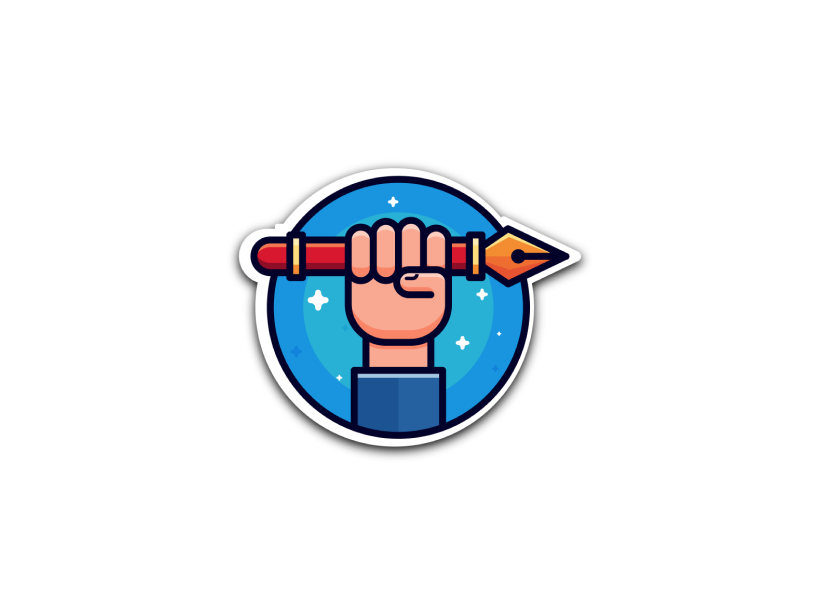
Resource pack
Get started with AI
Thanks for taking part in the course.
We’ve created this resource pack to remind you about the topics we covered, prompts to try out, information to help you keep learning at your own pace.


“I hope you enjoyed the course and found it informative and useful. If you need a little refresher you can find course highlights below as well as some handy hints and tips!”


What we covered
- What is AI? What is Generative AI?
- Using Generative AI to create text (ChatGPT)
- Using Generative AI to create images (Co-Pilot Designer)
You’ll find some helpful reading below under Further Reading. Just click on the “+” sign to expand each section.


We found other resources you might find interesting, I’ve added the links and videos below


What we learned
- Generative AI systems create new content including text, code, images, audio, and video.
- AI can help you cut down repetitive tasks, finish tasks faster, reduce errors, and lets you take on new tasks and skills.
We found other resources you might find interesting, I’ve added the links and videos below


Get prepared
Get prepared
-
Tools you will need
You will need access to certain apps to try out the prompts, so make sure you can access them on your computer.
- Sign up for a free account on ChatGPT
- Access to Image Creator by Microsoft Designer:
- Try to log into the app using a Microsoft account. This can be either your personal or work account. Note that work emails sometimes face access issues, so use a personal Microsoft account if you have a problem.
- Access to Adobe Firefly (optional):
- If you have an Adobe account, you can access Adobe Firefly. You can use this as an alternative if you prefer using Adobe products or encounter issues with Image Creator.
Using Generative AI to create text
Using Generative AI to create text
-
Chat GPT
ChatGPT is a generative AI system that specialises in generating text. It is trained on a wide range of text from the internet. It can make mistakes, so it’s worth checking the information.
You give ChatGPT a prompt and it generates new text based on that prompt.
What is ChatGPT good at?
- Explaining things
- Generating ideas
- Summarising and reviewing
- Recognising style and structure
What is ChatGPT not good at?
- Timely information
- Ambiguous or subjective questions
- Producing repetitive responses
- Emotional intelligence
-
Prompts for workers
Prompts to try
Explaining things
“Explain how a solar panel works. Use simple and direct language. Do it in 200 words or less.”
Generating ideas
“Give me 5 suggestions for a community event. Ask me some questions first before you come up with the ideas.”
“Give me 10 items of stationary that might be useful for a new office.” “How much would be reasonable to spend on this material for a team of 20 people.” “Write a short but professional email to a stationary supplier. They are called Scottish Pens Limited. Ask them for a quote for the above items. Maybe ask if they do a discount for public sector workers. Keep the tone friendly but professional. ”
Summarising and reviewing
“Summarise this email in 100 words using bullet points. [Insert email]”
“I conducted a staff survey to gather feedback on our recent project. Can you help me analyse the responses and indentify key themes or trends? [Insert survey]. Additionally, can you suggest a way to present these findings in a report to our management team?”
-
Prompts for teachers
Prompt to try
Create a quiz based on your own lesson
“Here is a transcript of my lesson. I want you to create 5 multiple choice quiz based questions I could ask the class to help test their learning of the subject. Make this quiz suitable for beginners, for a class of 12 year olds. [Add transcript of lesson].”
Getting ideas and inspiration for lesson plans
“I’m running a lesson fro 10 year olds about Newton’s Third Law. Can you suggest experiments that take no more than 15 minutes each that demonstrate the physics involved. For each experiment please detail any materials required, and clear step-by-step instructions that I can follow as a teacher.”
Creating very specific examples or sample data
“Give me 5 examples of sentences that use a verb incorrectly.”
“I am preparing a maths lesson for 9 year olds. I want to test their numeracy skills. Create a menu for a café with prices in £s. Then give me 6 questions that let them practice addition, subtraction, multiplication, and division. The questions must be in the form of a story.”
Helping learning prepare for a task, and reflect on their learning
“Provide simple criteria for evaluating show-and-tell presentation about Recycling for class of 12 year olds. Write this criteria in a format suitable for 12 year olds. Indicate how many points each category is worth.”
“Write three reflective questions for pupils to consider after their recent trip to Stirling Castle. In class they’ve been studying the challenges historic properties and monuments face today and what organisation might to do protect them.”
Giving whole class feedback
“I want you to write some class feedback from my Drama class. They have been rehearsing a scene from The Crucible. Here are their notes and names, write short feedback that gives general feedback that everyone as a class can improve on. [Insert data]”.
Using Generative AI to create images
Using Generative AI to create images
-
Co-pilot designer
Image Creator from Designer helps you generate images based on your words with AI.
What is image GenAI good at?
- Generating ideas and concepts
- Emulating a specific style or structure
- Rapid experimentation
- Enhancing or modifying existing images
What is image GenAI not good at?
- Getting images exactly as you want
- Being consistent
- Rendering text
- Imaginative, inaccurate representations
- Safety / Cost / Transparency
- Emotional Intelligence
-
Try it out
- Create an image:
- PROMPT: “an armchair in the shape of an avocado”
- Create a new image in a specific style:
- PROMPT: “An image of a smiling red haired woman in a coffee shop, sipping a coffee. In the style of __”
- Impressionism | Surrealism | Art Deco
- Cubism | Pixel Art | Line Drawing | Oil Painting
- “Barbie” movie | “Wes Anderson” film
- PROMPT: “An image of a smiling red haired woman in a coffee shop, sipping a coffee. In the style of __”
How accurate were the images? Did you get what you expected?
Did everyone get the same image for the same prompt?
Did the end result feel different to something you’d have created yourself?
- Create an image:
-
Create your own self portrait using AI
Create a self portrait using Generative AI. It could be a realistic representation, or it could be abstract.
You will create your self portrait by customising and adapting a pre-written Generative AI prompt.
- Go to Image Creator by Microsoft Designer
- Choose a template to start with
- Run the template
- Edit the prompt to create your self portrait
What was your approach? Realistic or abstract?
Were you able to get what you wanted by editing the prompt?
These prompt templates were adapted from ones created by Steve Bambury
-
Recreate a film poster
Recreate a movie poster: either for Barbie or Oppenheimer.
The catch: You must design the poster to appeal to the target audience of the “opposite” film.
- Identify the key elements you want on your poster
- Go to Image Creator by Microsoft Designer
- Craft and iterate prompts to create your counter-poster
Think about what you created, what design principles you used, and how your creation offers a counter-narrative / counter-position to the original film.
This activity was designed by Sarah Fischer, doctoral candidate at IU Bloomington.
Video tutorials
Here are some videos you may find useful
Did you enjoy the course?
Let us know or share some of the information below with your friends and colleagues online.

A little about us
We’re Digital Skills Education – a technology education company. We teach people the knowledge and skills to get the most out of technology – at home, in the workplace, or at school.

Know someone who would enjoy this course?
Recommend it to a friend.

If you liked this course, you might also like…
We’ve got another course where we’ll show you the best apps and features to keep your online accounts safe from cyber criminals.
How to keep your social media safe, secure, and “unhackable”


